Vat Photopolymerization of Ceramic Parts: Effects of Carbon Fiber Additives on Microstructure and Mechanical Performance
Abstract
:1. Introduction
2. Experiments and Measurement Procedures
2.1. Preparation of Raw Materials
2.2. Preparation of Ceramic Slurry
2.3. The Preparation of the Samples
2.4. Debinding and Sintering
2.5. Characterization
3. Results and Discussion
3.1. Effect on Microstructure
3.2. Effect on Physical Properties
3.3. Effect on Mechanical Properties
4. Conclusions
Author Contributions
Funding
Institutional Review Board Statement
Informed Consent Statement
Data Availability Statement
Acknowledgments
Conflicts of Interest
References
- Alghamdi, W.S.; Labban, N.; Maawadh, A.; Alsayed, H.D.; Alshehri, H.; Alrahlah, A.; Alnafaiy, S.M. Influence of Acidic Environment on the Hardness, Surface Roughness and Wear Ability of CAD/CAM Resin-Matrix Ceramics. Materials 2022, 15, 6146. [Google Scholar] [CrossRef] [PubMed]
- Vedel, D.V.; Grigoriev, О.M.; Osipov, А.E.; Mazur, P.V. Influence of High–Temperature Oxidation on the Strength of Ceramics Based on ZrB2. Mater. Sci. 2022, 57, 663–672. [Google Scholar] [CrossRef]
- Ayhan, Y.S.; Buyukaksoy, A. Impact of Fabrication Temperature on the Stability of Yttria Doped Bismuth Oxide Ceramics. Solid State Ion. 2019, 338, 66–73. [Google Scholar] [CrossRef]
- Li, Y.; Qian, W.; Hua, Y.; Ye, Y.; Dai, F.; Cai, J. Effects of Yb and Sc Co-Doping on the Thermal Properties and CMAS Corrosion of Garnet-Type (Y3-xYbx)(Al5-xScx)O12 Ceramics. Ceram. Int. 2023, 49, 7842–7852. [Google Scholar] [CrossRef]
- Gao, Y.; Zhou, H.; Yin, J.; Fang, Z.; Liu, H.; Liu, J.; Lu, C.; Xu, Z. Optical Properties and Thermal Stability of Gd1-xNdxBaCo2O5+δ Ceramics for High Temperature Air-Stable Solar Thermal Conversion. Sol. Energy 2023, 250, 10–17. [Google Scholar] [CrossRef]
- Yang, Z.; Gao, L.; Ren, W.; Zhang, R.; Chen, Y.; Zhou, Q.; Sun, K.; Jie, Z.; Jia, Y. Study on Electromagnetic Performance of La0.5Sr0.5CoO3/Al2O3 Ceramic with Metal Periodic Structure at X-Band. Materials 2022, 15, 8147. [Google Scholar] [CrossRef] [PubMed]
- Dzogbewu, T.C.; De Beer, D.J. Additive Manufacturing of NiTi Shape Memory Alloy and Its Industrial Applications. Heliyon 2024, 10, e23369. [Google Scholar] [CrossRef] [PubMed]
- Ramachandran, K.; Boopalan, V.; Bear, J.C.; Subramani, R. Multi-Walled Carbon Nanotubes (MWCNTs)-Reinforced Ceramic Nanocomposites for Aerospace Applications: A Review. J. Mater. Sci. 2022, 57, 3923–3953. [Google Scholar] [CrossRef]
- Zhou, Y.; Jiang, T.; Xu, B.; Lin, Y.; Zhang, M.; Liu, L.; Zhong, S.; Wei, C.; Chen, Y.; Yang, Y.; et al. Production of M-Type Strontium Hexaferrite Magnetic Powder with the High-Pure Magnetite Concentrate via the Ceramic Process. J. Asian Ceram. Soc. 2022, 10, 292–305. [Google Scholar] [CrossRef]
- Kusunose, T.; Yagi, T.; Firoz, S.H.; Sekino, T. Fabrication of Epoxy/Silicon Nitride Nanowire Composites and Evaluation of Their Thermal Conductivity. J. Mater. Chem. A 2013, 1, 3440–3445. [Google Scholar] [CrossRef]
- Gadow, R.; Kern, F. Pressureless Sintering of Injection Molded Zirconia Toughened Alumina Nanocomposites. J. Ceram. Soc. Jpn. 2006, 114, 958–962. [Google Scholar] [CrossRef]
- Wang, L.; Yu, H.; Hao, Z.; Tang, W.; Dou, R. Fabrication of Highly Translucent Yttria-Stabilized Zirconia Ceramics Using Stereolithography-Based Additive Manufacturing. Ceram. Int. 2023, 49, 17174–17184. [Google Scholar] [CrossRef]
- Shi, H.; Li, Y.; Xu, K.; Yin, J. Advantages of Photo-Curable Collagen-Based Cell-Laden Bioinks Compared to Methacrylated Gelatin (GelMA) in Digital Light Processing (DLP) and Extrusion Bioprinting. Mater. Today Bio 2023, 23, 100799. [Google Scholar] [CrossRef] [PubMed]
- Lu, J.; Yang, J.; Qiao, J. Enhancement of Electrostatic Suppression in Bubbling Fluidized Bed through Carbon Fiber Addition. Powder Technol. 2023, 428, 118797. [Google Scholar] [CrossRef]
- Kandola, B.; Sarker, F.; Luangtriratana, P.; Myler, P. Thermal Protection of Carbon Fiber-Reinforced Composites by Ceramic Particles. Coatings 2016, 6, 22. [Google Scholar] [CrossRef]
- Freudenberg, W.; Wich, F.; Langhof, N.; Schafföner, S. Additive Manufacturing of Carbon Fiber Reinforced Ceramic Matrix Composites Based on Fused Filament Fabrication. J. Eur. Ceram. Soc. 2022, 42, 1822–1828. [Google Scholar] [CrossRef]
- Liu, Y.; Cheng, C.; Sun, W.; Zhang, Z.; Ma, R.; Zhou, J.; Wang, J.; Wang, T.; Zheng, Q.; Du, Y.; et al. Negative Permittivity Behavior of Carbon Fibre/Alumina Ceramic Composites Prepared by Hot-Press Sintering. Ceram. Int. 2022, 48, 10031–10038. [Google Scholar] [CrossRef]
- Rubio, V.; Ramanujam, P.; Cousinet, S.; LePage, G.; Ackerman, T.; Hussain, A.; Brown, P.; Dautremonte, I.; Binner, J. Thermal Properties and Performance of Carbon Fiber-based Ultra-high Temperature Ceramic Matrix Composites (Cf-UHTCMCs). J. Am. Ceram. Soc. 2020, 103, 3788–3796. [Google Scholar] [CrossRef]
- Wang, H.; Wu, J.; Zheng, H.; Tang, M.; Shen, X. Strengthening Effect of Short Carbon Fiber Content and Length on Mechanical Properties of Extrusion-Based Printed Alumina Ceramics. Materials 2022, 15, 3080. [Google Scholar] [CrossRef]
- Wu, H.; Guo, A.; Kong, D.; Li, X.; Wu, J.; Hu, Y.; Qu, P.; Wang, S.; Wu, Y.; Liu, C. Vat Photopolymerization of Sepiolite Fiber-Toughened Alumina: Effects of Sepiolite Fiber Content on Microstructures and Physical, Rheological, and Mechanical Properties. Mater. Today Commun. 2023, 37, 107329. [Google Scholar] [CrossRef]
- Tang, W.; Zhao, T.; Dou, R.; Wang, L. Additive Manufacturing of Low-Shrinkage Alumina Cores for Single-Crystal Nickel-Based Superalloy Turbine Blade Casting. Ceram. Int. 2022, 48, 15218–15226. [Google Scholar] [CrossRef]
- Porwal, R.K.; Chandra, U.; Misra, R. Comprehending and Optimising Slurry Behaviour Characteristics of Ceramics in Additive Manufacturing. Adv. Mater. Process. Technol. 2022, 8 (Suppl. 3), 1664–1698. [Google Scholar] [CrossRef]
- Li, Y.; Wang, M.; Wu, H.; He, F.; Chen, Y.; Wu, S. Cure Behavior of Colorful ZrO2 Suspensions during Digital Light Processing (DLP) Based Stereolithography Process. J. Eur. Ceram. Soc. 2019, 39, 4921–4927. [Google Scholar] [CrossRef]
- Puchý, V.; Podobová, M.; Sedlák, R.; Falat, L.; Džunda, R.; Kromka, F.; Dusza, J. The Effects of Indium Additions on Tribological Behavior of Spark Plasma Sintering-Produced Graphene-Doped Alumina Matrix Composites for Self-Lubricating Applications. Crystals 2024, 14, 104. [Google Scholar] [CrossRef]
- Zeng, Y.; Chen, X.; Sun, L.; Yao, H.; Chen, J. Effect of Different Sintering Additives Type on Vat Photopolymerization 3D Printing of Al2O3 Ceramics. J. Manuf. Process. 2022, 83, 414–426. [Google Scholar] [CrossRef]
- Guo, A.; Zhou, X.; Kong, D.; Kong, H.; Wang, H.; Zhu, Y.; Qu, P.; Wang, S.; Hu, Y. An Insight into the Effects of Epoxy Coating Agent and Sintering Temperature on Vat Photopolymerization-Printed Al2O3 Parts. Ceram. Int. 2023, 49, 19227–19240. [Google Scholar] [CrossRef]
- Test Methods for Density and Apparent Porosity of Fine Ceramics. Available online: http://www.doc88.com/p-3973878886249.html (accessed on 28 March 2024).
- He, Z.; Wu, G.; Zhu, J. Mechanical Properties of Rock under Uniaxial Compression Tests of Different Control Modes and Loading Rates. Sci. Rep. 2024, 14, 2164. [Google Scholar] [CrossRef] [PubMed]
- Tang, J.; Guo, C.; Qin, L.; Wang, H.; Shi, F.; Liu, Z.; Pei, L.; Liu, J. Fracture Characteristics of Cement-Stabilized Macadam Using Three-Point Bending Test. Constr. Build. Mater. 2024, 419, 135384. [Google Scholar] [CrossRef]
- Tanu Halim, S.; Ng, E.-G. A Unique Numerical Iterative Approach for Modelling Individual Phase Stress-Strain Curves in Dual Phase Steel. Model. Simul. Mater. Sci. Eng. 2024, 32, 035001. [Google Scholar] [CrossRef]
- Paramatmuni, C.; Dunne, F.P.E. Effect of Stress-States on Non-Classical Twinning in Three-Point Bending of Magnesium Alloys. Int. J. Mech. Sci. 2023, 258, 108574. [Google Scholar] [CrossRef]
- Sun, J.; Yu, S.; Wade-Zhu, J.; Chen, X.; Binner, J.; Bai, J. 3D Printing of Layered Ceramic/Carbon Fiber Composite with Improved Toughness. Addit. Manuf. 2022, 50, 102543. [Google Scholar] [CrossRef]
- De Lisi, M.; Kovacev, N.; Attia, U.M.; Essa, K. Numerical Simulation of Sintering of DLP Printed Alumina Ceramics. Aerospace 2022, 9, 336. [Google Scholar] [CrossRef]
- Vidakis, N.; Petousis, M.; Michailidis, N.; Nasikas, N.; Papadakis, V.; Argyros, A.; Mountakis, N.; Charou, C.; Moutsopoulou, A. Optimizing Titanium Carbide (TiC) Ceramic Nanofiller Loading in Isotactic Polypropylene for MEX Additive Manufacturing: Mechano-Thermal and Rheology Aspects. Mater. Today Commun. 2023, 37, 107368. [Google Scholar] [CrossRef]
- Bhattacharjee, A.; Bose, S. Multifunctional Polydopamine—Zn2+-Curcumin Coated Additively Manufactured Ceramic Bone Grafts with Enhanced Biological Properties. Biomater. Adv. 2023, 153, 213487. [Google Scholar] [CrossRef] [PubMed]
- Verma, V.; Kumar, U.; Ghosh, S.; Gurnani, L.; Mukhopadhyay, A. Developing Intragranular Zirconia-reinforced Alumina Possessing Vastly Improved Mechanical and Tribological Properties. J. Am. Ceram. Soc. 2024, 107, 760–776. [Google Scholar] [CrossRef]
- Yamagiwa, K.; Kamimura, K.; Kimura, Y. One-Step Liquid-Phase Synthesis of Platinum Nanocatalysts Supported on Carbon Fiber Substrates and Their Electrochemical Characterization. Jpn. J. Appl. Phys. 2024, 63, 02SP22. [Google Scholar] [CrossRef]
- Junwei, Y.; Chen, F.; Ma, J.; Lin, T.; Chi, C.; Lu, Y.; Yan, S.; Bao, W.; Zhao, X.; Zhu, B. Enhanced Cu(II) Adsorption Capacity of Recyclable Activated Carbon Fibers for Flexible Self-Supporting Electrodes in Capacitive Deionization. ChemistrySelect 2024, 9, e202300817. [Google Scholar] [CrossRef]
- Choi, Y.; Meng, X.; Xu, Z. Manufacturing Process of Short Carbon Fiber Reinforced Al Matrix with Preformless and Their Properties. Sci. Rep. 2021, 11, 23385. [Google Scholar] [CrossRef] [PubMed]
- Li, S.; Zhang, Y.; Han, J.; Zhou, Y. Effects of Random Chopped Fiber on the Flexural Strength and Toughness of Reaction Bonded Silicon Carbide Composite. Ceram. Int. 2012, 38, 4695–4699. [Google Scholar] [CrossRef]
- Shahedi Asl, M.; Azizian-Kalandaragh, Y.; Ahmadi, Z.; Sabahi Namini, A.; Motallebzadeh, A. Spark Plasma Sintering of ZrB2-Based Composites Co-Reinforced with SiC Whiskers and Pulverized Carbon Fibers. Int. J. Refract. Met. Hard Mater. 2019, 83, 104989. [Google Scholar] [CrossRef]
- Sree Manu, K.M.; Ajay Raag, L.; Rajan, T.P.D.; Pai, B.C.; Petley, V.; Verma, S.N. Self-Lubricating Bidirectional Carbon Fiber Reinforced Smart Aluminum Composites by Squeeze Infiltration Process. J. Mater. Sci. Technol. 2019, 35, 2559–2569. [Google Scholar] [CrossRef]
- Lu, Y.; Li, W.; Zhou, J.; Ren, Y.; Wang, X.; Li, J.; Zhu, S. Strengthening and Toughening Behaviours and Mechanisms of Carbon Fiber Reinforced Polyetheretherketone Composites (CF/PEEK). Compos. Commun. 2023, 37, 101397. [Google Scholar] [CrossRef]
- Zahabi, S.; Arjmand, H.; Ramazani, M.; Al-Bahrani, M.; Naderi, M.; Tavoosi, M.; Gordani, G.; Loghman Estarki, M.R. The Effect of Alumina-Based Sintering Aid on the Microstructure, Selected Mechanical Properties, and Coefficient of Friction of Cf/SiC Composite Prepared via Spark Plasma Sintering (SPS) Method. Ceram. Int. 2023, 49, 15253–15265. [Google Scholar] [CrossRef]
- Khalil, K.M.S.; Elhamdy, W.A.; Said, A.E.-A.A. Nanostructured Sustainable Carbon Derived from Biomass as Catalyst Support for Alumina in Catalytic Methanol Conversion to DME as Hydrogen Carrier. Int. J. Hydrogen Energy 2024, 51, 819–833. [Google Scholar] [CrossRef]
- Chen, C.; Ding, X.; Wang, Y.; Luo, Z.; Zhai, P. Fractal Dimension Analysis of Structure and Bending Strength of Porous Alumina Prepared Using Starch and Carbon Fiber as Pore-Forming Agents. Fractal Fract. 2022, 6, 574. [Google Scholar] [CrossRef]
- Xue, R.; Wang, D.; Tian, Y.; Wang, J.; Liu, L.; Zhang, L. Zr-xNb-4Sn Alloys with Low Young’s Modulus and Magnetic Susceptibility for Biomedical Implants. Prog. Nat. Sci. Mater. Int. 2021, 31, 772–778. [Google Scholar] [CrossRef]
- Gürel, U.; Keten, S.; Giuntoli, A. Bidispersity Improves the Toughness and Impact Resistance of Star-Polymer Thin Films. ACS Macro Lett. 2024, 13, 302–307. [Google Scholar] [CrossRef] [PubMed]
- Wang, Y.; Zhou, Q.; Han, Z.; Han, Y.; Bi, L.; Zhang, X.; Lu, X.; Zhao, J.; Chu, W.; Li, J.; et al. Towards High Strengthening Efficiency of Equiaxed and Platelet-Shaped Alumina Reinforced Zirconia Ceramics with Textured Microstructure Using DLP-Based Stereolithography. Ceram. Int. 2024, 50, 2467–2478. [Google Scholar] [CrossRef]
- Zhou, Z.; Li, H.; Chen, C. Microstructural Transformation and Mechanical Properties of Cu-Sputtered Alumina Ceramic/Zn5Al/AA2024 Ultrasonic Soldering Joints. Intermetallics 2024, 165, 108153. [Google Scholar] [CrossRef]
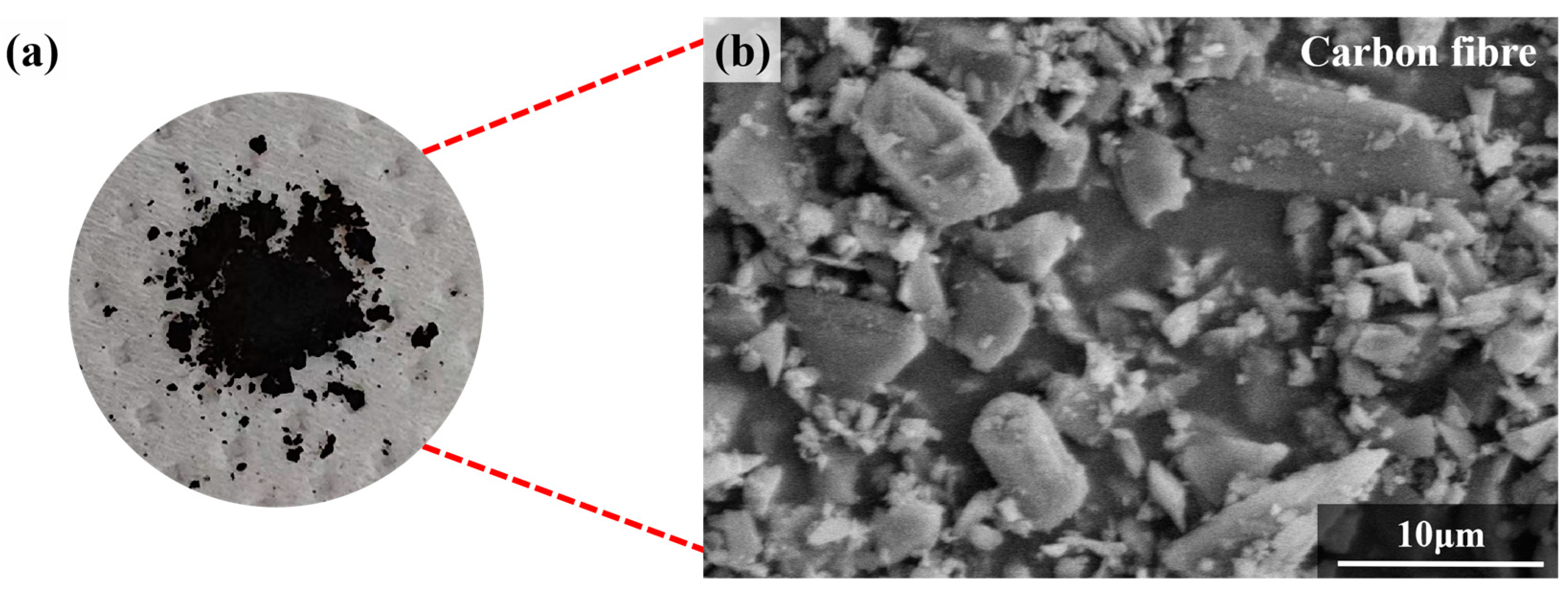
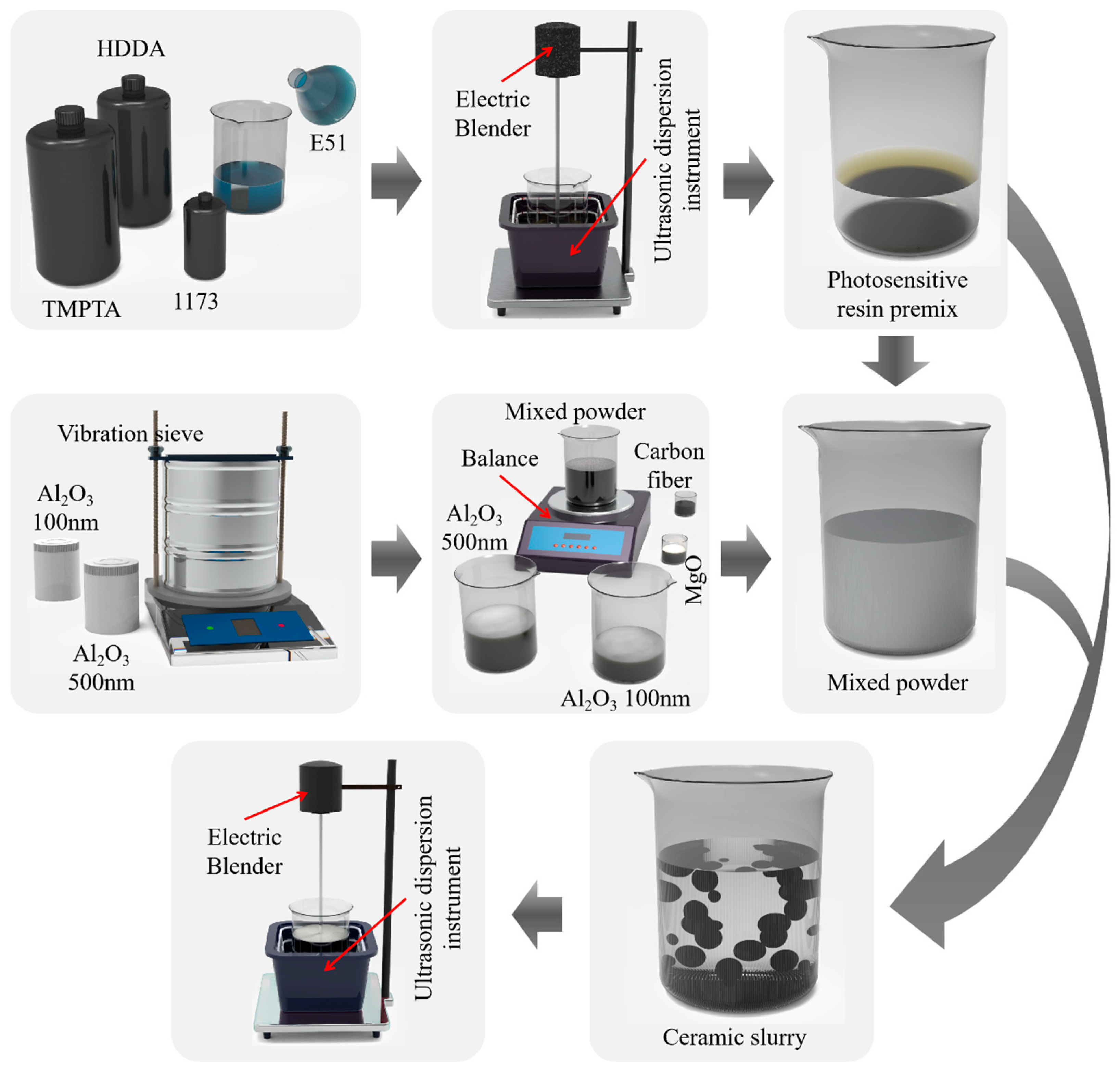
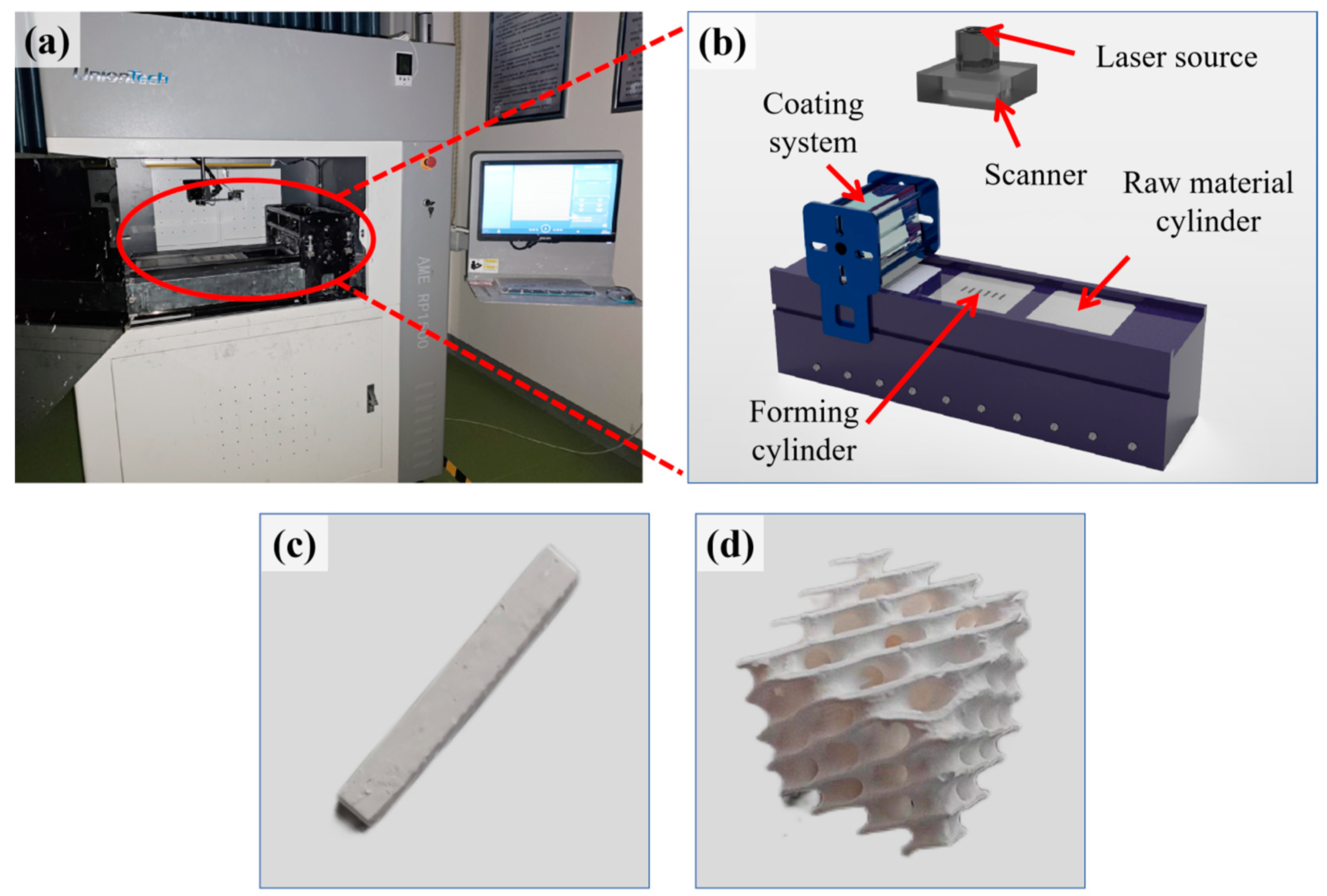
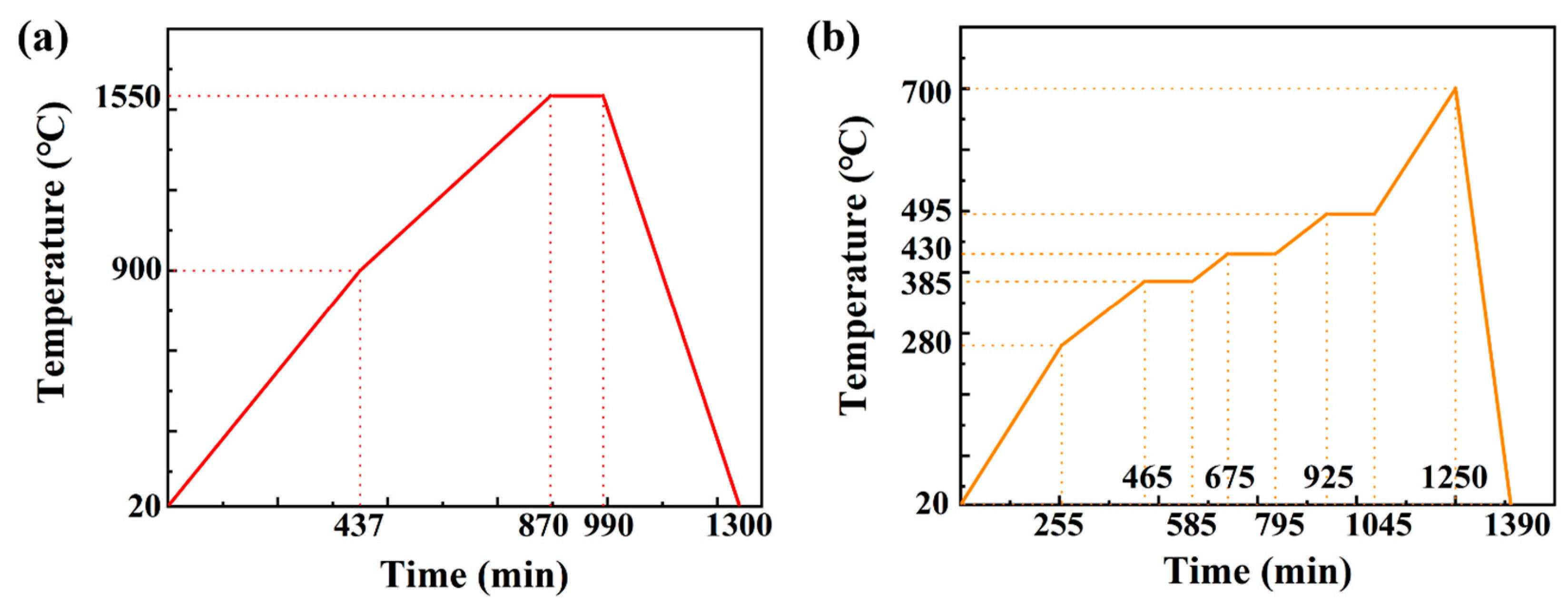


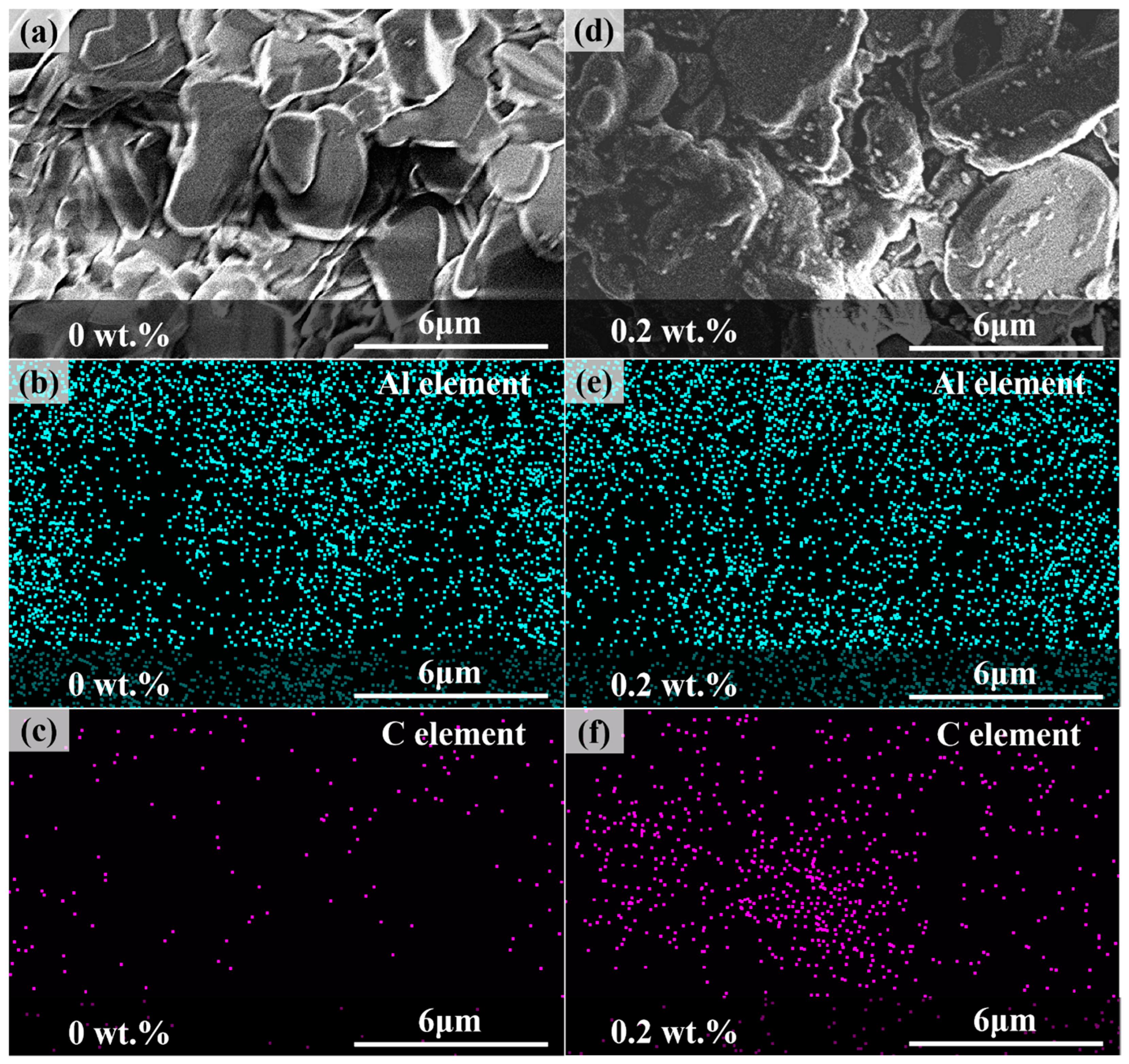
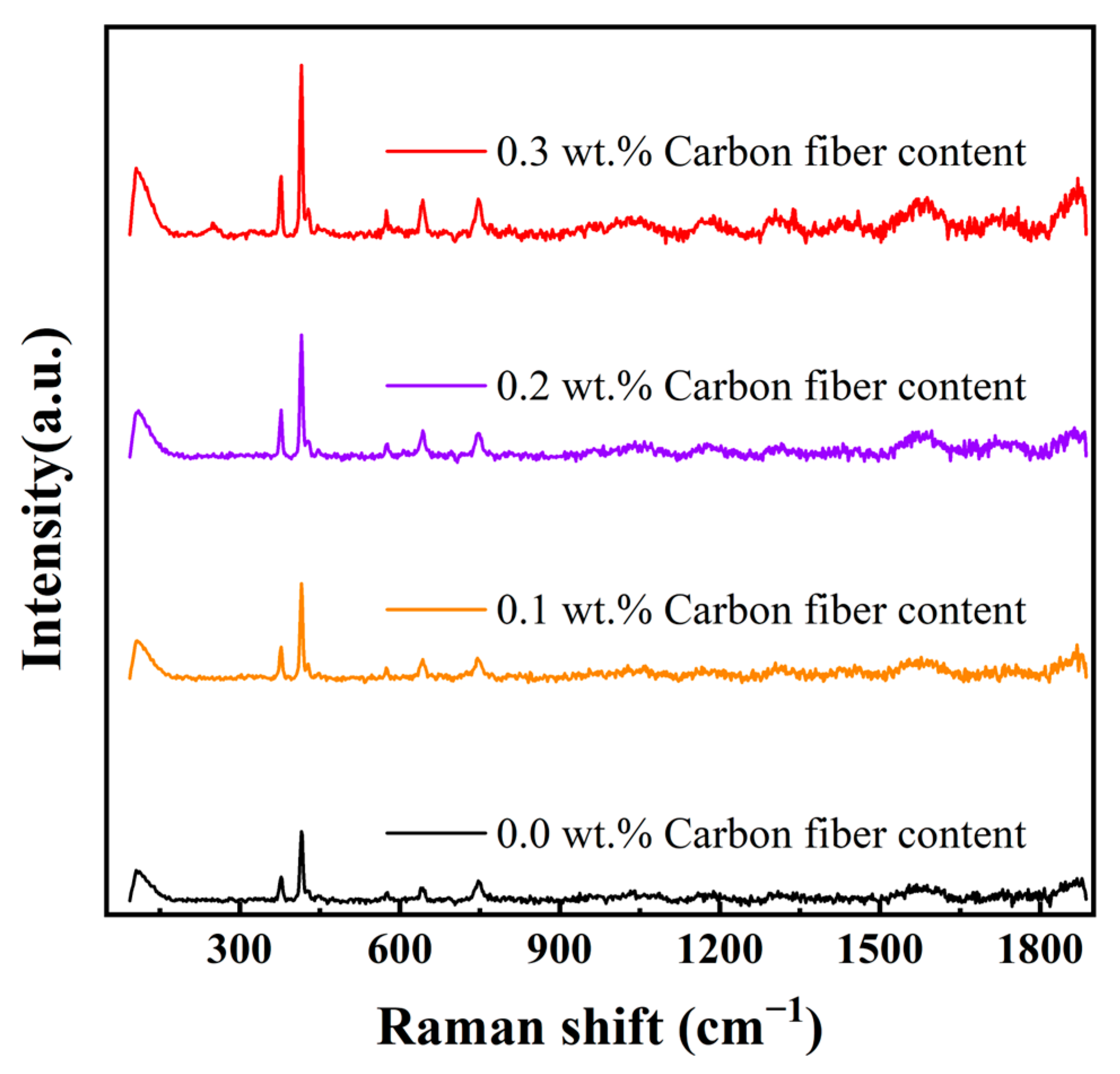
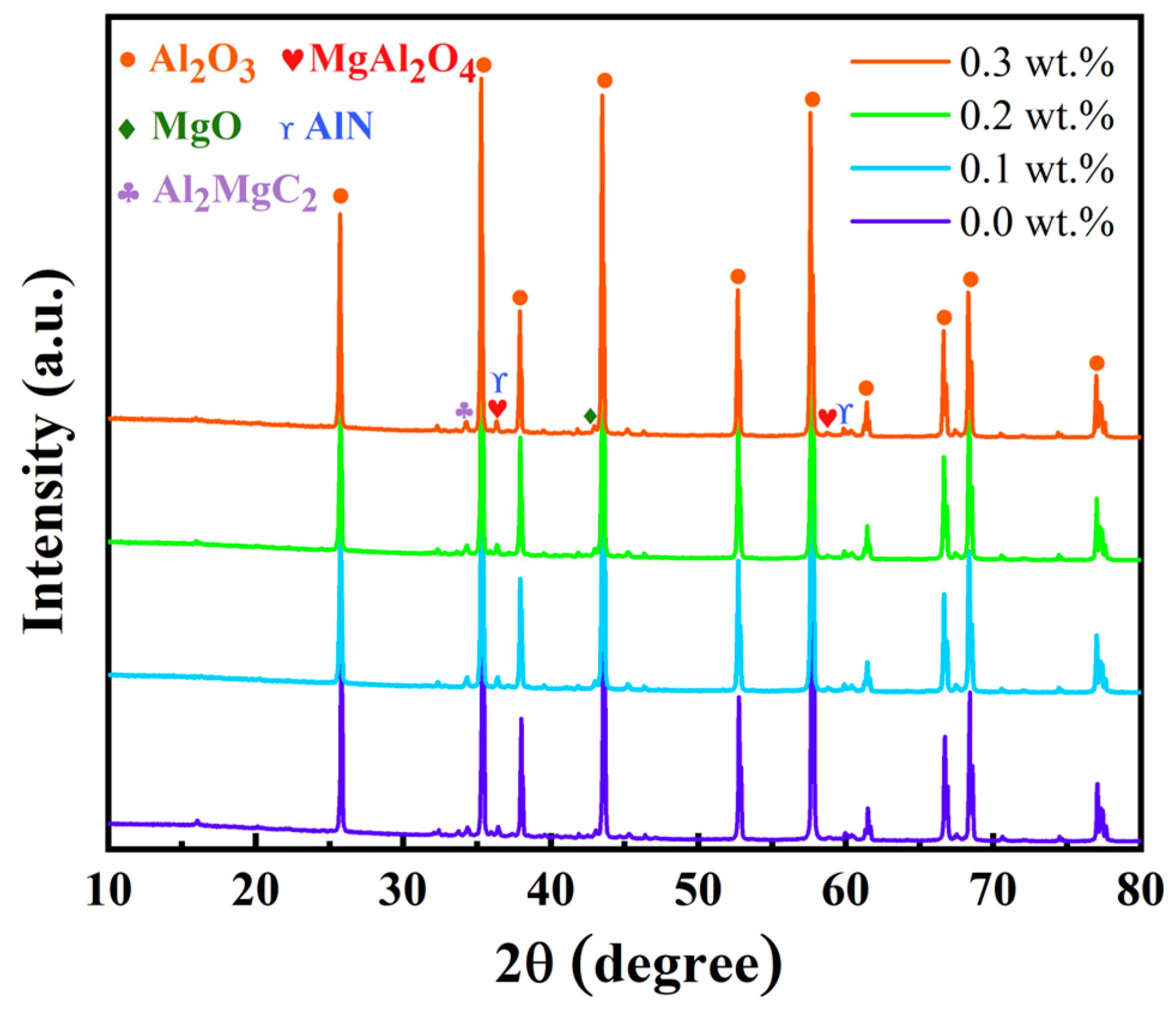


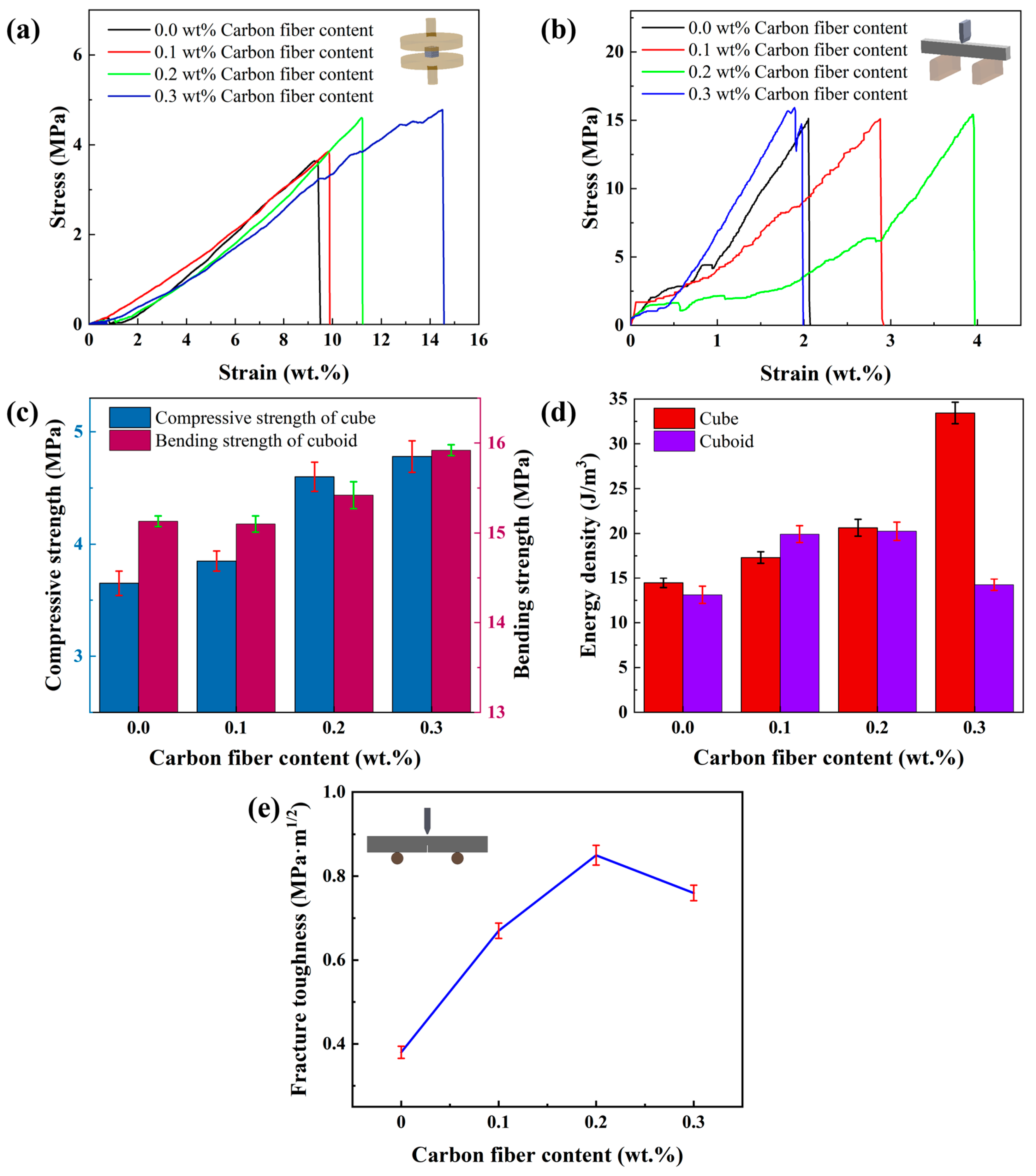
| Preparation Process | Microstructure | Mechanical Properties | Forming Accuracy | Manufacturing Complex Structures |
|---|---|---|---|---|
| Fused-Filament Fabrication AM Technology | Layered Lines | Slightly Enhanced | High Accuracy | Supported |
| Hot-Press Sintering | Few Defects | Significantly Enhanced | Moderate Accuracy | Not supported |
| Extrusion-Based AM Technology | Few Defects | Significantly Enhanced | Moderate Accuracy | Supported |
| VPP-Based AM Technology | Few Defects | Significantly Enhanced | High Accuracy | Supported |
| Grain Size | Element | Al2O3 | Na2O | Fe2O3 | TiO2 | K2O | SiO2 | CaO | MgO |
|---|---|---|---|---|---|---|---|---|---|
| 100 nm | wt.% | ≥99.9 | 0.02 | 0.01 | 0.01 | 0.01 | <0.01 | 0.02 | <0.01 |
| 500 nm | wt.% | ≥99.9 | 0.015 | 0.026 | 0.01 | 0.009 | 0.02 | - | - |
| Wavelength | Layer Thickness | Laser Power | Fill Distance | Fill Pattern |
|---|---|---|---|---|
| 355 nm | 50 μm | 120 mW | 30 μm | X-Y |
Disclaimer/Publisher’s Note: The statements, opinions and data contained in all publications are solely those of the individual author(s) and contributor(s) and not of MDPI and/or the editor(s). MDPI and/or the editor(s) disclaim responsibility for any injury to people or property resulting from any ideas, methods, instructions or products referred to in the content. |
© 2024 by the authors. Licensee MDPI, Basel, Switzerland. This article is an open access article distributed under the terms and conditions of the Creative Commons Attribution (CC BY) license (https://creativecommons.org/licenses/by/4.0/).
Share and Cite
Wang, L.; Wu, H.; Guo, A.; Kong, D.; Zhao, Z.; Liu, C.; Yin, L.; Xia, G.; Su, X.; Chen, Z.; et al. Vat Photopolymerization of Ceramic Parts: Effects of Carbon Fiber Additives on Microstructure and Mechanical Performance. Materials 2024, 17, 3127. https://doi.org/10.3390/ma17133127
Wang L, Wu H, Guo A, Kong D, Zhao Z, Liu C, Yin L, Xia G, Su X, Chen Z, et al. Vat Photopolymerization of Ceramic Parts: Effects of Carbon Fiber Additives on Microstructure and Mechanical Performance. Materials. 2024; 17(13):3127. https://doi.org/10.3390/ma17133127
Chicago/Turabian StyleWang, Lu, Hailong Wu, Anfu Guo, Dekun Kong, Zhengyu Zhao, Chang Liu, Lvfa Yin, Guojun Xia, Xiaofei Su, Zhong Chen, and et al. 2024. "Vat Photopolymerization of Ceramic Parts: Effects of Carbon Fiber Additives on Microstructure and Mechanical Performance" Materials 17, no. 13: 3127. https://doi.org/10.3390/ma17133127
APA StyleWang, L., Wu, H., Guo, A., Kong, D., Zhao, Z., Liu, C., Yin, L., Xia, G., Su, X., Chen, Z., & Wang, D. (2024). Vat Photopolymerization of Ceramic Parts: Effects of Carbon Fiber Additives on Microstructure and Mechanical Performance. Materials, 17(13), 3127. https://doi.org/10.3390/ma17133127







